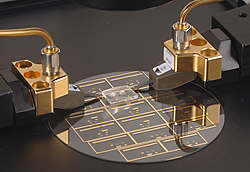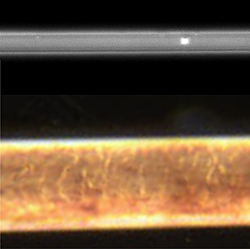Researchers at the National Institute of Standards of Technology (NIST) and George Mason University have demonstrated what is probably the world ‘s smallest microwave oven, a tiny mechanism that can heat a pinhead-sized drop of liquid inside a container slightly shorter than an ant and half as wide as a single hair. The micro microwave is intended for lab-on-a-chip devices that perform rapid, complex chemical analyses on tiny samples.
Microwave Energy

Based on classical theory of how microwave energy is absorbed by fluids, the research team developed a model to explain how their minature oven would work. They predicted that electromagnetic fields localized in the gap would directly heat the fluid in a selected portion of the micro channel while leaving the surrounding area unaffected.
Measurements of the microwaves produced by the system and their effect on the fluid temperature in the micro channel validated the model by showing that the increase in temperature of the fluid was predominantly due to the absorbed microwave power.
Once the new technology is more refined, the researchers hope to use it to design a microfluidic microwave heater that can cycle temperatures rapidly and efficiently for a host of applications.







